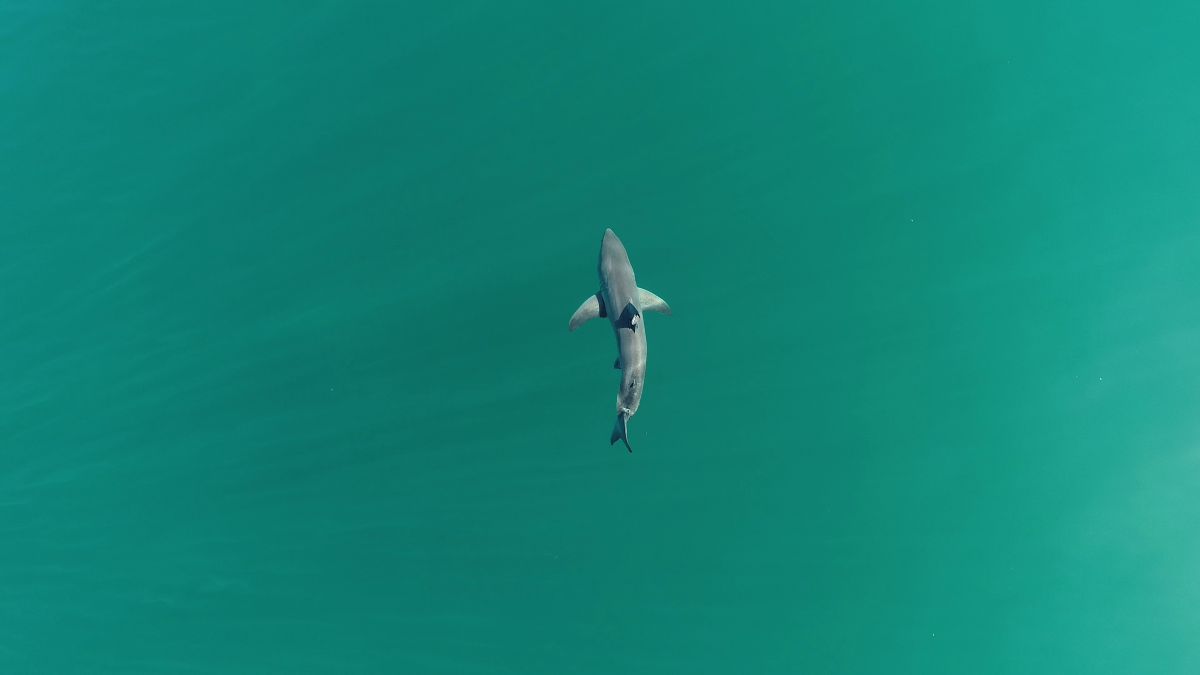Baby great white sharks prefer to lurk in shallow waters close to shore, a new study has found.
Marine scientists from California State University, Long Beach, have proved this for the first time, answering one of the long-standing mysteries relating to great white sharks.
Juvenile great white sharks, and their nursery areas, are hard to document as the species are so elusive. Scientists already know that young white sharks stay in nursey areas when they are first born, however the exact location of them remains a mystery, and sightings are extremely rare.
The new findings, published in the journal Frontiers in Marine Science, are important not just for research into the species but also for conservation purposes. The scientists also believe they could help protect the public from "negative shark encounters" on beaches around California.

Although shark attacks on humans are very rare, they can happen when humans and sharks are in close proximity. During the warm summer months, more people tend to be in these shallow areas off beaches, preferred by the young sharks.
"Overall, this research highlights the need to study individuals at a scale relevant to what the animal uses to make their movement decisions," first author Emily Spurgeon, a former master's student and current research technician on Lowe's team, told Newsweek.
"Also, understanding the thermal cues juvenile white sharks use to make their decisions allows us to be better prepared on what to expect under changing climate scenarios."
To reach their findings, Lowe and colleagues tracked 22 young great white sharks using sensor transmitters between 2020 and 2021. The sensors recorded water pressure and temperature, feeding the researchers information.
Pausing research only during the winter months when juveniles travel offshore, the researchers continued to look into depths that they preferred as well as the temperatures.
They found that young great white sharks went deepest at certain times of day—dawn and dusk. They also lurked closer to the surface in the afternoons, when the day temperature reached its peak.
Overall, the findings show that juvenile great white sharks have to be constantly on the move, following the preferred temperatures.
"We showed that juveniles directly altered their vertical position in the water column to stay between 16 and 22° C, and if possible between 20 and 22° C. This may be their optimum to maximize growth efficiency within the nursery," Spurgeon said in a statement.
As a result of this, they found that juvenile great white sharks are mainly in shallow waters.
"Southern California juvenile white sharks aggregate in shallow and nearshore water within their nurseries and while this may be due to prey availability and protection from predators, they occupy this shallow and nearshore water likely because it offers warmer conditions than offshore and deeper waters," Spurgeon told Newsweek.
Baby great whites are left completely to their own devices after birth. Their nurseries are normally found in protected bays, where pups can avoid predators until they can survive in the open ocean.
For an area to be classed as a great white shark nursery, there must be proof that young white sharks occur there more frequently than in other areas. They also must remain there for an extended period of time, and use the same area repeatedly for multiple years.
Although great white sharks remain an elusive species, and there is still much to learn, scientists are making progress.
Earlier this year, a live baby great white shark was spotted in the wild for the first time in California. Before then, the sharks had never been observed as juveniles. In fact, their mating rituals and birthing continues to be a mystery.
This new study adds to the growing knowledge that scientists are acquiring about the species.
"Temperature isn't the only thing influencing juvenile white shark movement," Spurgeon said. "Conducting similarly fine-scale studies on other factors such as prey availability, prey community composition, other environmental factors, or possible social dynamics between juvenile white sharks will be vital to fully understand how and why juvenile white sharks use nearshore beaches commonly shared by public beachgoers."
Update 4/19/24, 10:08 a.m. ET: This article was updated with additional comments from Emily Spurgeon.
Do you have a tip on a science story that Newsweek should be covering? Do you have a question about sharks? Let us know via science@newsweek.com.
Uncommon Knowledge
Newsweek is committed to challenging conventional wisdom and finding connections in the search for common ground.
Newsweek is committed to challenging conventional wisdom and finding connections in the search for common ground.
About the writer
Robyn White is a Newsweek Nature Reporter based in London, UK. Her focus is reporting on wildlife, science and the ... Read more
To read how Newsweek uses AI as a newsroom tool, Click here.








